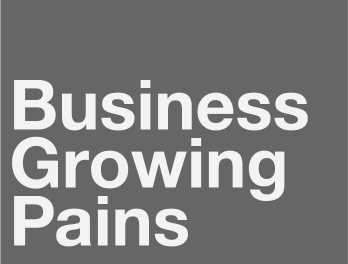Business Growing Pains
Articles & key learnings from business growth experts & practitioners
latest articles on business growing pains solutions
Trending Now
TOP 10 CAUSES OF BUSINESS GROWING PAINS
TOP 10 CAUSES OF BUSINESS GROWING PAINS 1. Lack of Product Market Fit - Product market fit is the relationship between your products and services and your market. It is the gauge the venture capitalists look at a prospective investment to see whether it has identified...
What is Product Market Fit & Why is it so Important?
creating a business strategy for your online business or bricks & mortar business should be similar evaluate plan and engage with experts. They can point out the holes in your strategy allowing you the room to develop it further.
Habit Creation For Business Success
Relying on motivation and passion to build your business is exhausting and unreliable. Building habits around your tasks and work output will ensure you complete what you set out to achieve.
How Do You Make Your Brand Resonate With Your Customers, So They Trust You And Want To Buy From You?
Developing an authentic story around your brand, builds trust with your ideal customer and allows them to see themselves as successful and the hero of their story.
TOP 10 CAUSES OF BUSINESS GROWING PAINS
TOP 10 CAUSES OF BUSINESS GROWING PAINS 1. Lack of Product Market Fit - Product market fit is the relationship between your products and services and your market. It is the gauge the venture capitalists look at a prospective investment to see whether it has identified...
What is Product Market Fit & Why is it so Important?
creating a business strategy for your online business or bricks & mortar business should be similar evaluate plan and engage with experts. They can point out the holes in your strategy allowing you the room to develop it further.
Habit Creation For Business Success
Relying on motivation and passion to build your business is exhausting and unreliable. Building habits around your tasks and work output will ensure you complete what you set out to achieve.
How Do You Make Your Brand Resonate With Your Customers, So They Trust You And Want To Buy From You?
Developing an authentic story around your brand, builds trust with your ideal customer and allows them to see themselves as successful and the hero of their story.
Business Growing Pains
What is it that Inhibits Business Growth and Makes Business Owners Feel Stuck?
Businesses must grow – If a business doesn’t continue to grow, it dies. – However if it doesn’t grow in the right way or the right direction, it struggles to breathe.
Peter Ellis identifies the key elements. skills and resources are required for a business to transition between small business and successfully grow to a medium business. Impact-Site-Verification: 1173464753
The data, research and anecdotal evidence provided on this blog comes from a four year research project in his Doctor of Business focussed on management education and a further for years for a PhD in Business size development.
The research examined over 200 businesses transitioning between small business to medium size business and identifies firstly what designates the size of a private sector enterprise business. It also identifies, through his practical work with over 30 years’ experience, in business growth strategy and successfully mentoring hundreds of businesses owners through a successful growth cycle.

Dr Peter Ellis
Business Coach & Mentor
From the Site Coordinator
Peter and I have spent the last few years working as consultants and strategists. I have been working predominantly with growth from the perspective of growing sales and the number of clients through traffic generation and conversion strategies. Over the last five years, I have worked on well over 100 different campaigns in all industries. Peter has spent his time as a Growth Specialist and has research and written about what affects a business that is growing and hinders their growth either through leadership or a lack of structure.
We realised that our two disciplines brought together along with our unique skills make for an unbeatable collaboration and believe that we can offer value that goes well beyond any online course bought from a box. We know that in the case of growing a business, one size does not fit all. It’s easy to spout generic ideas that don’t take into account disruption and changes in the cost of marketing and reach. There is plenty of so called agencies and consultants doing this in a way that causes harm and distrust.
We hope that in providing you complete ideas in our articles, you will be able to use some of these to alleviate some of the growing pains you are experience, as well as differentiate between the hype you see so much of and essential core ideas and guides

Andrew Brabant
Site Coordinator
Follow Us
Subscribe to our new Articles

What Are Business Growing Pains?
Business growing pains are the pain that the business or the founders experience as a business goes from start up to small business, small business to medium business or medium business to large business.
Peter’s research has looked at the transitional pain that businesses experience, put simply when a business gets stuck in between small and medium, or startup and small. Each of these business sizes are in fact large jumps in strategy, financial undertaking, technology and staffing. You can think about it a bit like car racing industry. To reach Formula 1 or even any level of professional racing, you need a team, mechanics, drivers, sponsors, deep pockets and lots and lots of practice on the circuit. You can’t take your homebuilt go-cart to a pro race event without learning some savage lessons.
The same goes for a business, if you want to go from a small business to a medium size business and the reason that I pick on this size transition is it is the most common sticking point for a lot of businesses. You need to make a plan to grow your business that doesn’t just include more marketing to get more customers. You need a plan and a strategy, you need a vision that you can follow as a road map.
TOP 10 CAUSES OF BUSINESS GROWING PAINS
-
1. Lack of Product Market Fit –
Product market fit is the relationship between your products and services and your market. It is the gauge the venture capitalists look at a prospective investment to see whether it has identified its customers, the marketing channel, what problem it solves for its ideal customer and whether it will grow.
Getting this right is fundamental to growth and without it, you will fail to grow sufficiently. Finding product market fit is fundamental to your business growing pains and will elevate your business and how quickly you can grow
For an in depth information on this, read this post. Product Market Fit – Why it is so important for growth.
2. Trying to do it all yourself
This is an obvious problem for two reasons:
- You will burnout if you try and do everything yourself Business Burnout – How to avoid it
- And the main issue a founder has if they try and do everything is that they are not focused on the work that will grow their business.
Busy work or the work that is day to day tasks that can be delegated to a staff member will stop the founder from doing their most important work, which includes being strategic about what will grow their business and focusing on the number one thing that will make the largest difference to the business’s growth. Habits for Business Growth
3. Lack of systems and Automation
A lack of systems is a major contributing factor to a business not growing after PMF and not focusing on the elements that will grow your business.
The correct systems will put everything you need to know about your business at your fingertips when you need them. It will automate tasks that take your time away from your business growth. It will allow your staff to be more agile and stop coming to you for information.
With the correct CRM and EDM systems, you can automate sales, customer information and conversion sales funnels.
If you are doing half your work using a spreadsheet or keeping customer enquiries and information in email, then you are wasting days each month and need to find some powerful automation systems. For more on building systems in your business check out this post Building Systems and Automation
4. Culture and Identity
Culture is a very broad area of the business to focus on and will come from the founder down, in terms of the belief in the future of your business and it isn’t about bean chairs in the breakout room or dogs in the office.
It involves:
- Having the right staff and hires and they way that they are remunerated.
- Having a business that has a great product, knows its customers, responds to their needs and has the right tools in place that alleviate frustration among staff is also paramount.
From my experience, a business that has direction and brand, great customers and treats them well and everyone is paid well and doesn’t feel over extended all the time, will organically build a good culture and be able to grow when it needs to.
5. Lack of Resources
During the phases of growth between startup to small business or small business to medium business, there will be a need to improve systems and assets. Resources will require investment from founders and possibly external investors.
Spend time in your planning looking at how you will fund your growth transitions. If you are willing or need to take on external investment to reach your growth targets, try to find an investor that can provide information and mentorship along the way and that can understands your vision for the business.
Be realistic about your business and its ability to show a dividend for your investor to avoid future conflict or undoing the what you are trying to achieve.
6. Lack of Direction
This is really common and impacts a business by not ensuring that the right growth elements are focussed on.
Founders and business owners are sometimes focused purely on growing their revenue but don’t have an idea of what part of their business they are growing, what market they want to grow into and how their competitors are growing in the same market. You don’t jump in your car and drive without having a destination in mind.
Having direction allows you to identify what you need to change or build in order to grow your business. Direction is a fundamental part of your growth strategy. Does Your Business Strategy Have What It Needs?
7. Not enough Focus on Building Assets
The businesses that weather economic changes better than others are the ones that have the most valuable assets.
Good share prices come down to assets and resources, good retirement is investment in assets. You buy property and shares to increase your personal asset portfolio. The same is for your business.
If you don’t have good staff, a good website, a nice office environment, good sales tools, a lead generation asset, then you simply can’t grow your business as you won’t attract the right customers and staff that will help you grow.
Identifying the assets that will make the biggest difference to your revenue and bottom line and building or acquiring these assets as part of your growth strategy for your business, will make it grow organically and allow you to sell for a higher price if you choose to cash in down the track.
8. No strategy for Scaling the Business
When a business of any size grows, it must have a strategy for scaling. In its most simple example, if you triple your sales in a year, you need to know in advance, who and how you are going to meet the demand of sales, warehousing, customer service, staffing, automation and a raft of other elements.
I am not suggesting that you hire before your start to grow, but mapping out what elements you need to fund and add to the business to manage demand is an essential strategy.
I have seen this time and time again, where the business has taken my advice on driving and increasing sales. As a result of this and a lack of planning the staff and systems get overextended and customers are neglected.
Both of these situations stop growth when staff and customers leave your business. Don’t let this be you. What Strategies do you need for Growth?
9. A Brand that isn’t Developed.
A no name brand suitcase can sell for $30 retail, a Louis Vuitton suitcase sells for $8,000 and a Hermes shoulder bag sells for $20,000. This is the impact of a brand.
Brand is not about how cool your logo is, but how your ideal customer identifies with your brand. Good brand is about elevating the buyer’s status. Think purely about Tesla Cars. Eg: I am the type of person who is …., I want my friends to know that I can afford… I want people to know that I am conscious about the environment and I want to be cool and ahead of the crowd. I want people to think that I know Elon Musk. This is an example of where the brand is the design and engineering of the product.
My advice about creating and developing your brand:
- Identify your ideal customer. Look at what brands they follow and buy.
- Identify why they have a relationship with those brands, why they like them and how they make your customers feel. Doesn’t have to be a competitor of your product.
- Don’t only focus on their logo and visuals, analyse how they treat their customers, what value adds they offer, what their brand ethos is eg: sustainability, social profiles and every touch point they have with the customer and the market.
- Do a gap analysis between your brand and the ones your customers like and start bridging that gap with your own unique but attractive to your customer brand elements.
For more on Brand A Brand Resonates With Your Customers, So They Trust You And Want To Buy From You?
10. Struggling to get new customers
New customer enquiries or sales come from a number of sources, referral, direct sales, online engagement and the easiest sales are the ones that come to you instead of outbound direct sales and are the most efficient in terms of growth. If you are unsure why your new prospects are not picking up the phone and calling you, then review the following:
- Referral. Look at why someone would refer your business to a friend and make it attractive. Quality and service are a major factor here
- Inbound sales. These are predominantly driven by search or social media. Your focus here should be an attractive offer to your ideal customer that identifies what problem it solves for them or how it elevates their status in some way.
- Online traffic is a commodity, you can buy it the form of online ads to the right audience or search term. The more you spend the more traffic you get, however the difference between sales and enquiry and no new business is conversion strategy.
- You need to de-risk in the prospect’s mind the purchasing or enquiry decision by using best practice conversion strategy of social proof, a strong value offer, quality brand which alludes to quality product, professional look, feel, copy, logo, risk reversal and a clear benefit to buying your product or service.
My advice is do some research and engage a professional that focuses on marketing ROI and understands conversion strategy and can build a lead nurturing strategy for you. Once you have new referrals and cold sales leads coming in every day, you will start to grow. Don’t forget to look after and nurture the customers you already have. It is much lower in cost keeping a happy customer than acquiring new customers. see: What is Product Market Fit & Why is it so Important?
Bonus – A lack of experience or Skills in Business or Your Market
Tip: Research, learn and read. Skills can be learnt or hired. Experience is acquired.




